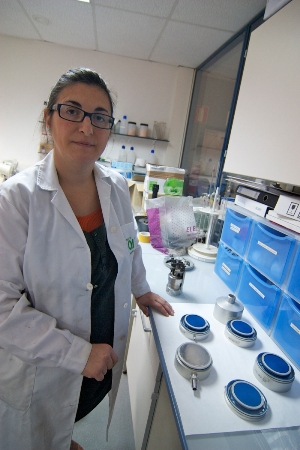Nov 17 2012
Nanoparticles which float in the air may seem somewhat insignificant. Nevertheless, knowing them is a vital in many fields: for example, when evaluating individual or room filtration systems, the effectiveness of protection equipment for workers who handle potentially dangerous elements and the suitability of the handling practices of nanoparticles in industrial processes.

In addition, this demonstrates the relationship between the concentration of these tiny sized elements and the health risks. In fact, the smaller the size of a particle the easier it is for it to enter our respiratory system.
So, wouldn’t it be convenient to know what particles surround us? Are there professions in which harmful nanoparticles are released during processes? Let’s look at the case of welding. Does welding metals release harmful elements? And if this is the case, how should welders protect themselves?
The study of these issues, among other activities, is what the Basque entity, Aliatec, does, a union of three companies (ACUSG, AIRG and AMEQ) which are experts in acoustics, monitoring emissions, management of emissions into the atmosphere and sustainable processes. The company began in 2010 and is made up primarily by chemical and industrial engineers.
María Luisa Marroquín, responsible for projects, defines Aliatec, located in the Bizkaia Technology Park, as “an external environmental department” which companies can subcontract.
At Aliatec they use the technology of nanoparticle detection to carry out work related with the study of air. They ‘catch’ particles in suspension with technologies like impactors, which distribute them into different layers depending on their size. The fundamental theory of its operation is based on the behaviour of the particles in the heart of an air current. These possess certain inertia, a result of its mass and speed, which makes them move away from the lines of flow when an abrupt change in the air current occurs. Taking advantage of this phenomenon, the impactors in cascade provide a fractional separation of different particle sizes. They are a series of plates with holes, grooves, etc... which force the flow of air to change direction.
Later, the physical-chemical characteristics are evaluated, meaning, its size, its morphology and its toxicity. “The equipment is a diagnostic tool, like a doctor’s”, explains Marroquín.
In the project on nanoparticles present in welding smoke, developed in collaboration with the University of the Basque Country and Tecnalia, they discovered that when welding metal, nanoparticles are released into the air which present cytotoxicity (meaning that they are toxic to cells), although it has not been proven that any of them have the ability to alter genetic information.
The results confirmed that the type of welding influences the size of particles released, which in the welding process, toxic particles are released and their toxicity increase as their size decreases. In addition, they analysed the efficiency of the particle filtration of different elements of the workers’ safety equipment such as gloves and aprons.
A recommendation for workers is included among the conclusions of the study: that they use a helmet equipped with a respiratory mask because it is shown that it acts as a protective barrier against nanoparticles.
Nebulisers
In another study, Aliatec collaborates with the Research Unit of Cruces Hospital, improving the nebuliser system of a medicine used to help in developing the respiratory system of premature newborns who have been traditionally been administered by means of a catheter. According to Marroquín, although ‘nanodrops’ cannot be considered nanoparticles, their behaviour as an aerosol is similar.
The use of nebulisers is not new, but their technical needs are changing to give way to more versatile (capable of nebulising products with different physical-chemical characteristics) and safer nebulisers (which can administer exact dosages which avoid the risk of toxicity and secondary effects and reduce the cost of products).
Specifically, the objective of the project is to implement a nebuliser prototype capable of generating an optimal spray with products that have physical-chemical characteristics as different as exogenous natural surfactants (ENS) and perfluorocarbons.
The future
In the future, Marroquín believes that an interesting field in which the Aliatec Corporation can find innovative solutions is the management of ‘nano’ waste in recycling processes, which is to say, the recycling of nanoparticles or the materials which contain them.